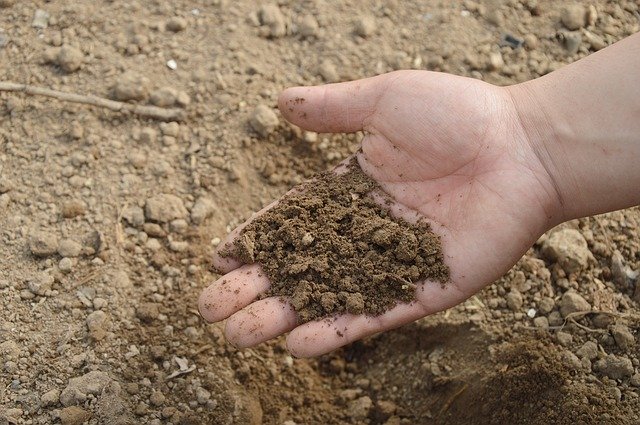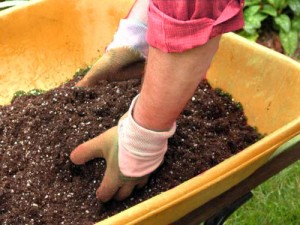Feeding and Soil Supplements

 Question from Jill:
Question from Jill:
I recently saw you speak in Laguna Beach and I enjoyed every second of it! I grew up on a dairy farm in the central valley and we had our own garden. I left the valley when I went to college and after a few degrees and a few years of work, ended up in Laguna with my husband 10 years. Out backyard was a mess but I’ve been working diligently and now have a very nice garden built up.
Your book has been the exact thing I’ve been seeking for many years. Something that keeps a calendar for me of what to do each month. I’ve already devoured the book and, after a very successful summer garden (with much thanks to the weather), I am thrilled to start my winter garden.
OK – so, down to business…
At this point, I am working on feeding properly, and have been focusing on getting my soil very healthy. To do this, requires many different products. For fertilizers, you need some with high Nitrogen, some with low Nitrogen. Some plants will benefit from things like humic acid and liquid seaweed or kelp. For soil amendments, I am using gypsum and a good soil building compost. Also have an acidic soil amendment for berries and other plants. Then, you’ve got products for pests – soap, insecticide oil, disease control (organic), etc.
Here is the thing. I feel like I am need more room in my garden to STORE all of my supplies than I do for the garden itself (yes – Laguna Beach homes – love them but not much space). It is also costing me a fortune! I would love to say I could mix my own concoctions to save a buck, but with a young one in school and a busy schedule,it is challenging enough to get the basics done.
So, if you had to come up with a “Doctor and Health Kit” for your garden that had a minimal amount of products, WHAT WOULD THEY BE? I realize this is extremely tough because you have no idea what I grow. However, if you consider a typical southern cal garden (most common things in my garden are azaleas, camellias, agapanthas, geraniums, flowers (foxgloves, nemesia, lambs ear, English daises), roses), what would you come up with? Can you do it?
Thank you again for a wonderful speech. You are inspiring and incredibly informative. Thank you
Answer from Pat:
I am sorry for this late reply to your charming email. I have been on vacation for two weeks in Italy. Very glad to hear you enjoyed my lecture in Laguna Beach.
I sympathize with your worries about all the products you apparently need for gardening. Actually, making a home-made fertilizer is not that difficult or time consuming and then you could use it for everything. First, however, use up all the other fertilizers you have on hand so as not to waste. See page 77 for some formula’s, but I think I gave you a more simple formula during my lecture. What you need to think is that plants need nitrogen, phosphorus, and potassium plus trace minerals. Use seed meal for the nitrogen, bone meal or super phosphate for the phosphorus, Sul-Po-Mag for the potassium and Kelp Meal for trace minerals. It is not too hard to get bags of this stuff and then mix up a big bucketful according to the amounts I gave in my lecture and then use for everything adding a bit more of this or that when you decide it’s needed. I realize I mention many ideal fertilizers for many different plants in my books. This is because scientifically plants do have precise needs, but actually there is a way to do things in a more simple manner.
One way many organic gardeners simplify is to cover the ground with a layer of manure in fall and let the rains water it in. This could be horse manure, chicken manure, rabbit manure or sheep manure. (If using horse manure make sure your tetanus shot is up to date.) A good layer of manure can provide enough organic matter and fertilizer for the basic landscape to stay healthy and growing for a year. Also, make compost of everything possible and when that rots add that to soil also. I no longer have a chipper so I have to send most woody stuff to the green waste community compost, but I order a truckload of chipper mulch every year and mulch my whole property with it. If I get this from a local tree trimmer it is free. He dumps it on my drive and my gardener spreads it on paths and beds. This keeps down weeds and holds in moisture and gradually rots thus improving the soil. As for me, I find my plants suffer from few diseases or pest problems. The more organic one becomes the easier it gets and the fewer things one needs to buy. Banana peels are great for adding phosphorus and potassium to plants such as roses. Coffee grounds and tea leaves from your kitchen or free from Starbucks go over the roots of acid-loving plants such as camellias and azaleas. Dead fish and fish entrails from fish markets make a wonderful complete fertilizer for anything. Just dig in deep so animals aren’t attracted. Free ground carrot pulp and vegetable pulp can be had for nothing from juicing places. Add to compost or dig it right in. Leaves cut off plants when pruning can be chopped up a bit and thrown over roots as mulch to rot, thus adding organic matter to the very plants from which they came. I know all this takes time and effort. Your child is young now but as he or she grows up you will have more time to fit in these tasks if you have fun doing them. With sloppy veggie waste from the kitchen, you can just dig a hole under a path in the vegetable garden and pour it right in, cover up, push down with your foot and that’s it.
I hope this helps a bit!


Well, now it is I who am so sorry for not thanking you in a timely fashion. Right as I got this email, I ended up in the hospital for four days with a pretty serious appendix attack. I was out and down for about a month
and I am so behind in everything right now – I feel like I just cannot get caught up. My poor garden has suffered the most. I had seeds ready to go in to my garden and they have now been neglected. Am disappointed but will still plant and all will be fine! I cannot thank you enough for answering my email. I was so surprised that you took the time to actually write as most website owners do not. The depth of information you provided was so incredibly helpful – I am just so appreciative. We are leaving for a tropical vacation over Thanksgiving with 7 families from Laguna Beach. Yes – 15 kids under the age of 10 year – lots of fun! While everyone will be reading their novel, I will continue to read my Pat Welsh Southern Cal Gardening book. I cannot wait! Thank you for the inspiration, the knowledge and the individual help. You are truly amazing.
I have a small commercial stone fruit orchard in Southern Turkey, I am not an agronomist nor have background in agriculture except for being a partner in a family orchard for the last couple of years.
I am interested in finding a comprehensive pest spray program and fertilizing schedule for stone fruits and pomegranate in commercial orchards.
For example how fertilizer calculations are made(coming backwards from should be-dry material content in a single fruit and then how many fruits or kilograms of fruits are expected and that makes total element quantitites in fruits and then nutritions used in leaf, bud, branch developments, chemically bonded element quantitites in the soil, etc.) I gave an example between the parantheses, however what is the methodology I should follow in making the yearly fertilization plan. In addition to that plan for common fungicide and pesticide applications and their timing. Any good source explains these?
It may surprise you to know that even in a country, such as USA, where scientific agriculture is practiced the amounts of fertilizer to be applied to stone fruit trees have never been decided upon in a conclusive way and this is due to the variations of conditions, soil, climate, water etc. A great many farms today are growing organic fruits and this means no synthetic fertilizers. Also, feeding with too much nitrogen tends to create too much growth at the expense of fruit. Winter training and pruning correctly is of greatest importance, often more so than fertilizer.
In our Mediterranean climate the instructions for stone fruits are to feed lightly under the drip line just as the flower buds swell but before they open. Water the fertilizer into the ground well. Organic fertilizer such as blood meal, bone meal and sol-po-mag is recommended. Mulch is good on top of the soil.
Another way to fertilize is to spread manure, such as horse, cow, or sheep manure under the canopy of the branches in fall after the leaves drop from the tree and let the winter rains wash the nutrients into the ground. Then no other fertilizer or mulch is needed. Regarding pest control, in general winter spraying with dormant sprays is all we do but this must be done once a month in winter and any visible pests and loose bark should be scraped away as well as dead wood removed and the ground cleaned up afterwards.
Pomegranate trees do not require much fertilizer. For a young tree feed 3 times a year, applying for each feeding one ounce of balanced granular fertilizer 14-14-14 or 20-20-20 or similar, per foot of trunk height leaving a circle of a foot or two around the trunk with no fertilizer. Gradually increase the amounts as the tree grows until you are feeding 8 ounces each feeding. Then irrigate into the ground. Pomegranates can live with little water but do better when they receive regular irrigation or natural rainfall.
I have access to sheep fertilizer over 100 lb/week, can i just used it without aging it on my garden ( trees and vegetable), I live in Clairemont San Diego ca.
Yes sheep manure is non-burning and can be used without aging.